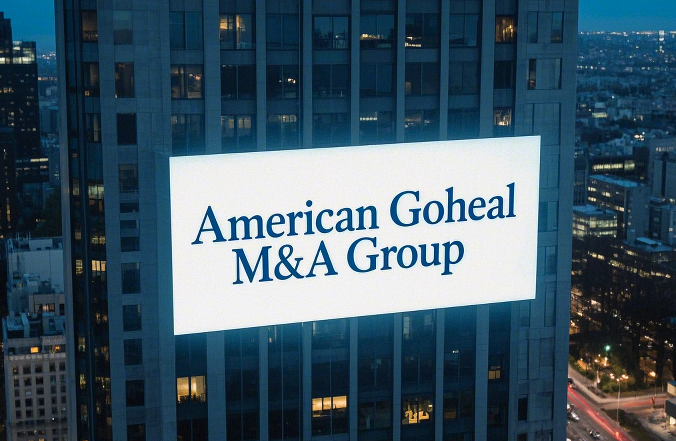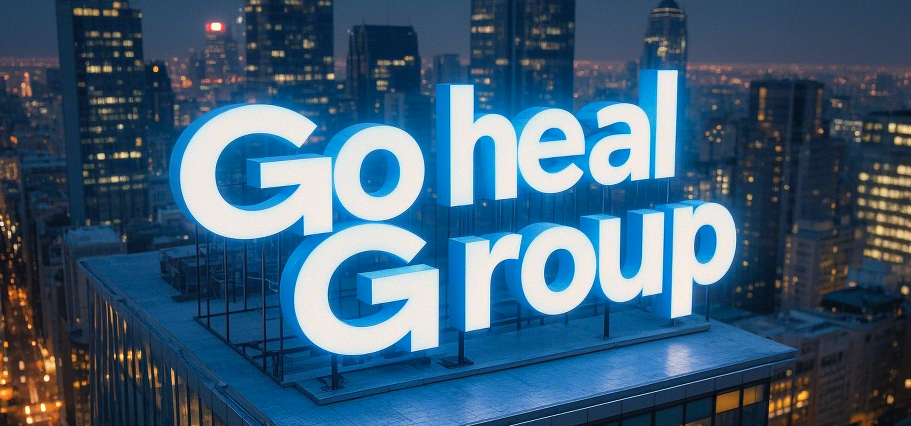In the big theater of the capital market, cash flow is the most honest actor. As a famous saying goes: "Investors can only earn the part of the free cash flow generated by the company in the end." Today, with the ebb tide of high valuations and confusion in profit caliber, investors' vigilance against "paper wealth" has already soared, and the password that can really pry the market value magic cube is hidden behind those lines of free cash flow statements.
In Goheal's view, free cash flow is not just a financial term, but also the ultimate expression of the vitality of an enterprise. It represents the ability of an enterprise to "breath calmly" after paying all bills. And it is this "breathing space" that gives the hard support and soft power of the enterprise's market value leap.

American Goheal M&A Group
The Alchemy of Free Cash Flow - Converting Profit Phantom into Real Gold
Let's put aside those companies that sing high-sounding tunes with "net profit growth" and return to the core indicator of cash flow. The formula of free cash flow (FCF) is not complicated: net cash flow from operating activities minus capital expenditures. But truly smart companies know how to turn this formula into a magic spell to increase valuation.
Gree Electric is an alchemist. When the market was filled with "net profit" bubbles, it quietly compressed inefficient businesses, streamlined redundant investments, and achieved a free cash flow conversion rate of 104%, which means that for every dollar of net profit, it can generate one dollar and four dollars in cash. What investors value is this ability to cash in real money, not the digital juggling of paper games.
Goheal has repeatedly emphasized in his M&A consulting practice that high-quality M&A targets are not necessarily those with the highest net profit, but those "cash-making machines" with stable FCF conversion rates, reasonable capital expenditures, and good receivables control. Whether a company can leverage the flywheel of market value depends on whether it can continue to generate healthy and distributable free cash flow.
The capital market is a casino of faith, and free cash flow is the bet chip
To understand how free cash flow is converted into market value premium, we have to go back to the essence of market value: market value = net profit × price-to-earnings ratio. The price-to-earnings ratio is a comprehensive reflection of market sentiment and expectation management. Simply put, investors don't look at how much money you make now, but how many times the premium they are willing to pay for the money you "may" make in the future.
Take Moutai as an example. Its free cash flow rate exceeds 90% every year. This is not accidental, but the inevitable result of its stable business model, smooth sales collection, and light asset structure. It is precisely because of this "predictable cash generation ability" that the market dares to give a valuation multiple far exceeding that of its peers. This is the role of free cash flow as a "trust currency" in the capital market.
Goheal found that in many Hong Kong-listed projects, the quality of free cash flow has become a high-frequency word for review and investor attention. Even if many companies have a large revenue volume and bright net profit, their valuations are discounted and financing fails due to serious deviations from FCF and high cash occupation. The alchemy of market value premium, in the final analysis, is a bet on future cashability, and free cash flow is the only "visible trump card" in this bet.
From saving to opening up, the "reshaping project" of free cash flow is quietly starting
Creating a stable and sustainable free cash flow is not simply "tightening the belt." Smart companies know how to tap into cash flow potential in strategic reshaping and "leverage" in capital allocation.
For example, Gree Electric has reduced its real estate business, sold inefficient assets, and reinvested resources in its core home appliance sector; another example is cloud computing companies acquiring computing power leasing companies, reducing external procurement, and developing core technologies on their own. This not only increases gross profit, but also reduces cash flow expenditure, and increases the base and stability of FCF.
Goheal also adopted this strategy when assisting a new energy company in restructuring: abandoning continuous financing for low-conversion rate businesses and instead reaching a "light asset cooperation" with upstream equipment manufacturers through a technology licensing model, which increased free cash flow by 38% during the year and valuations by nearly 50%.
In addition, the design of capital allocation strategies is also crucial. Repurchases and high dividends are not just "candy" for shareholders, but also a "muscle display" to release the confidence of the company's free cash flow. Moutai's annual dividend rate of more than 30% + intermittent share repurchases essentially transforms stable cash output into a valuation anchor point in the minds of investors.
How to "tell a good free cash flow story"? Investors are the best audience for storytelling
However, good indicators alone are not enough, the market needs to understand your story. At this time, expectation management becomes the third key.
Goheal observed in participating in overseas financing roadshows that those companies that successfully increase their valuations are often not "the most beautiful data", but "the most logical storytelling". They know how to use "scenario-based indicators" to link technological progress with cash flow potential, turning future uncertainties into an orderly evolving growth curve.
For example, Torui quantified the "AI public opinion analysis system" as an FCF growth model for future government orders, enhancing investors' confidence in its ability to implement technology; and Alibaba Cloud built its "AI chip + algorithm" investment path into a closed-loop story of "capital expenditure-technological breakthrough-free cash flow improvement", attracting capital favor.
In addition, innovative market value management tools are also quietly emerging. Some leading companies have tried to issue structured products linked to free cash flow, such as "FCF index ETF" or "convertible bonds linked to FCF growth targets" to attract long-term allocation funds and smooth valuation fluctuations. This type of tool is both a verification of FCF and an amplifier of market trust.
The gold mine of market value is hidden in the vein of cash flow
Of course, market value premium is not a myth that can be achieved overnight. Behind any great alchemy, there must be repeated tests of financial rupture. Once the cash flow quality of a high-premium M&A target is poor, it is very easy to fall into the "free cash flow trap" of valuation collapse. Chitianhua's acquisition of Shengjitang is a lesson learned: when the target company suffered losses for two consecutive years and accounts receivable dragged down cash flow, the valuation of the entire parent company also fell to zero overnight.
Goheal emphasized that companies should set a bottom line for FCF conversion rate for high-risk M&A projects and establish an extreme stress testing mechanism - simulating the cash flow safety boundary under a 30% market shrinkage, so as to stabilize the valuation ship in the capital storm.
Going further, companies should also learn the "cash flow allocation rule" - we recommend the "721" strategy: 70% of free cash flow is used to strengthen the main business, 20% is invested in technology research and development, and 10% is returned to shareholders. This allocation ratio is both stable and aggressive, which can not only guarantee growth momentum, but also stabilize the expected curve of the capital market.
Written at the end: Next stop, can data assets also be transformed into market value magic?
Looking back at the paths of those companies that have broken through market value, we see a common trend: whoever can tell a good free cash flow story is more likely to win the market's valuation favor. But with the penetration of variables such as AI, data elements, and technology going overseas, can the traditional cash flow model still cover all of the company's future value? Or will we also usher in the birth of a new measurement system called "data cash flow"?
Goheal believes that when the alchemy of free cash flow matures, new value anchors will follow. In the ever-evolving game of capital operation, the end may always be just the next starting point.

Goheal Group
Are you ready for the new market value magic?
[About Goheal] Goheal is a leading investment holding company focusing on global mergers and acquisitions, focusing on the three core business areas of acquisition of listed company control, mergers and acquisitions of listed companies, and capital operations of listed companies. With its deep professional strength and rich experience, it provides companies with full life cycle services from mergers and acquisitions to restructuring and capital operations, aiming to maximize corporate value and achieve long-term benefit growth.